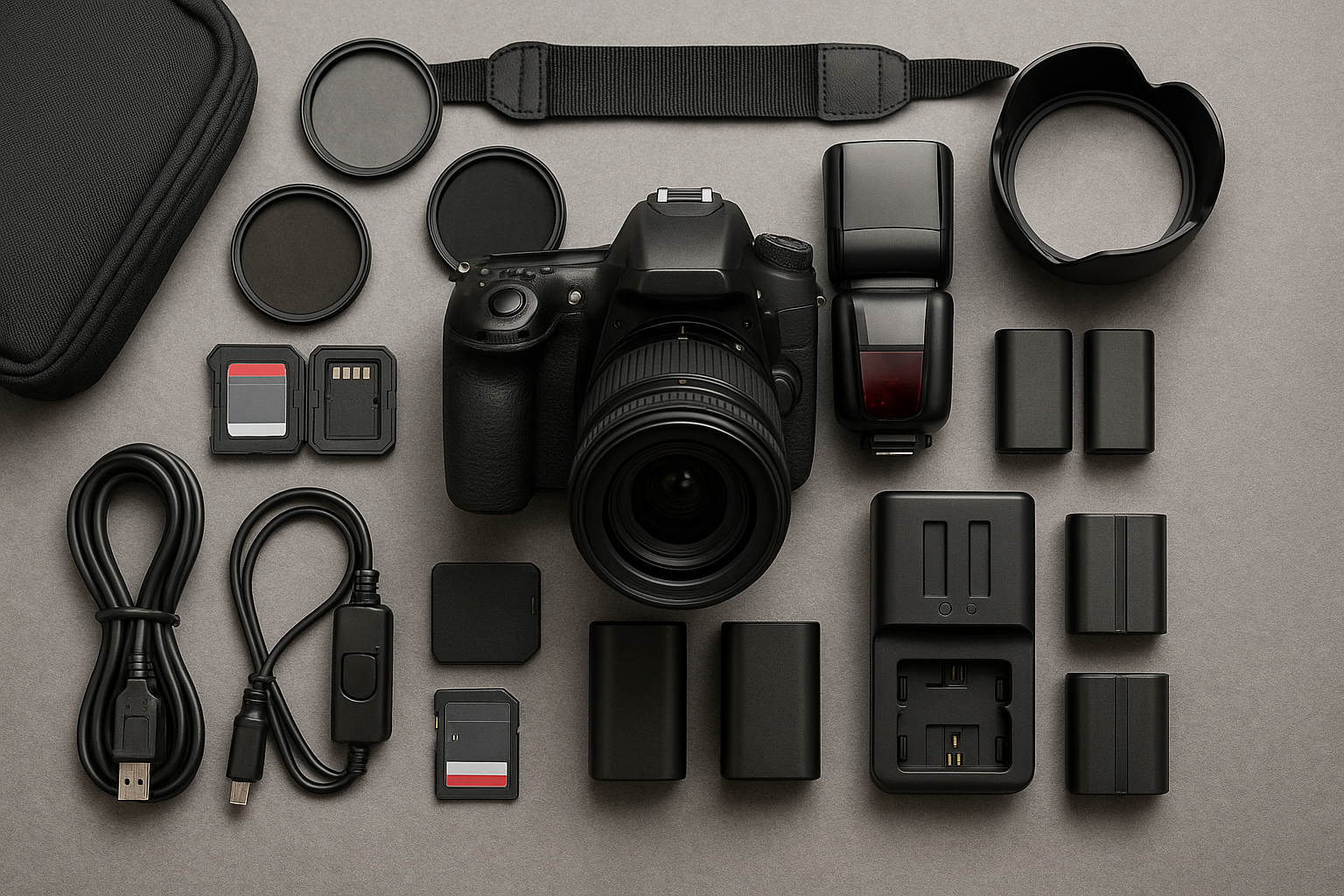Table of Contents
This blog post may contain affiliate links. As an Amazon Associate I earn from qualifying purchases.
Introduction
Investing in a quality DSLR camera body and lens is vital, but to truly expand your creative capabilities, protect your gear, and streamline your workflow, you need the right accessories. Whether you’re shooting landscapes, portraits, travel, events or commercial work, the right add-ons can make a world of difference. In this guide you’ll discover the must have DSLR camera accessories for photographers in the U.S.
We’ll cover why each accessory matters, how to choose the right version, practical case-studies from real-world use, and direct you to complementary resource, including tips for “camera tips”, “best camera accessories” and “photography gear essentials”.
By the end of this article, you’ll have a clear roadmap of the accessories worth adding to your kit, how to prioritise them, and how to integrate them into your workflow.
Why Accessories Matter for DSLR Photographers
Even a high-end DSLR can only deliver its full potential when paired with the right supporting tools.
- Protection & reliability: A crash, burst of dust, or dead battery can ruin a shoot. Accessories minimise risk.
- Creative flexibility: Filters, triggers, grips, stabilisers expand your shooting styles and results.
- Workflow efficiency: Fast memory cards, proper bags, remote controls, and power options keep you shooting rather than waiting.
- Professional credibility: Using well-considered gear sends a signal to clients that you’re operating at a professional level.
- Longevity: Protecting your investment means your gear will serve you longer and retain value.
In short: accessories are not just optional extras—they can be foundational to achieving top-tier results and supporting your business. For those looking to refine their shooting practice, the right kit can make the difference between “good enough” and “outstanding”.
Top DSLR Camera Accessories You Should Consider
Here is a carefully structured list of must-have DSLR accessories, organised by priority and use-case. Each section includes what the accessory is, why it matters, how to choose the right one, and real-world tips.
Camera Bag / Protection & Transport

What it is: A dedicated bag, backpack or case sized for your DSLR body, lenses and accessories.
Why it matters: Even the best gear is vulnerable in transit. A good bag offers padding, compartments, weather protection, and ensures you’re ready on location. According to one review, “a bag is essential… especially as you start to accumulate more gear or travel further afield”. Photography News+1
How to choose:
- Size and layout: Make sure it fits body + 2-3 lenses + accessories.
- Protection: Padded dividers, weatherproof exterior, easy access.
- Transport mode: Backpack vs shoulder bag vs roller case depending on travel style.
- Comfort: Especially important if you carry gear for long periods.
Tip: When packing, keep your frequently used lens in a quick-access compartment and designate a safe zone for memory cards and battery spares.
Memory Cards and Storage

What it is: High-speed SD or CF cards (depending on your DSLR), plus backup storage.
Why it matters: Slow or low capacity cards can bottleneck performance—especially when shooting RAW, burst mode or video. Canon Central and North Africa+1
How to choose:
- Speed rating: Look for UHS-II/U3 or V30 (for SD cards) if your camera supports it.
- Capacity: At least 64 GB or 128 GB for full-frame/still + video work.
- Reliability: Brands with good reputation (e.g., SanDisk, Lexar, Sony).
Tip: Always carry two cards and swap as soon as one is full. Practice a “one card in the camera, one in your pocket” discipline.
Lens Filters (UV, Polarising, ND)

What it is: Filters that screw onto the front of your lens – typically UV (protection), polarising (reduce reflections/enhance skies), and ND (neutral density) for long exposure/bright conditions.
Why it matters: These filters can help control light creatively and protect your lens. Canon Central and North Africa
How to choose:
- Match the thread size of your lens.
- Opt for quality glass/coating (multicoated) to minimise aberration.
- Polariser: good for landscape and reflective surfaces.
- ND filter: ideal for long exposures in daylight.
Tip: Use the polariser for outdoor work – rotate it until the effect is visible in your viewfinder before shooting.
Tripod / Monopod / Stabilisation Support

What it is: A stable support for your DSLR that ensures sharp images in low-light, enables creative composition, or steady video capture.
Why it matters: Even slight camera shake can degrade your image quality—tripods raise your technical standard and open new shooting scenarios (time-lapse, long exposure) otherwise impossible handheld.
How to choose:
- Weight/load rating: Ensure it supports your camera + heaviest lens.
- Height and portability: Travel-friendly versus studio use.
- Head type: Ball head vs pan/tilt head depending on your needs.
Tip: For landscapes or travel shoots, pack a mid-sized carbon-fibre tripod—it pays back by enabling sharper results and less fatigue.
External Flash / Speedlight / Lighting Accessories

What it is: A flash unit (on-camera or off-camera) and possibly modifiers like softboxes, bounce cards, reflectors.
Why it matters: Natural light alone isn’t always adequate. Good lighting control elevates your work—especially in portrait, event or commercial photography.
How to choose:
- Flash compatibility: TTL support for your DSLR brand.
- Output power: Guide number sufficient for your work.
- Modifiers: To soften or shape light.
Tip: For event shoots, carry two flashes. One on-camera as a fill, one diffused to the side for modelling light.
Spare Batteries / Power Bank / Charger Solution

What it is: Extra camera batteries, a reliable charger, and optionally a USB-C power bank or AC adapter support.
Why it matters: Dead battery = missed shot. Many photographers lose business simply because they didn’t have enough power in the field. Even the UK-site review recommended it. Photography News
How to choose:
- Use genuine or high-quality third-party batteries.
- Ensure charger supports fast-charging and works with your battery type.
- Power bank: For longer shoots, especially travel, a bank that supports USB-C/power delivery can keep gear alive.
Tip: Before major shoots, recharge all batteries fully and keep one in your pocket—even if you don’t need it, it gives peace of mind.
Remote Shutter Release / Wireless Trigger
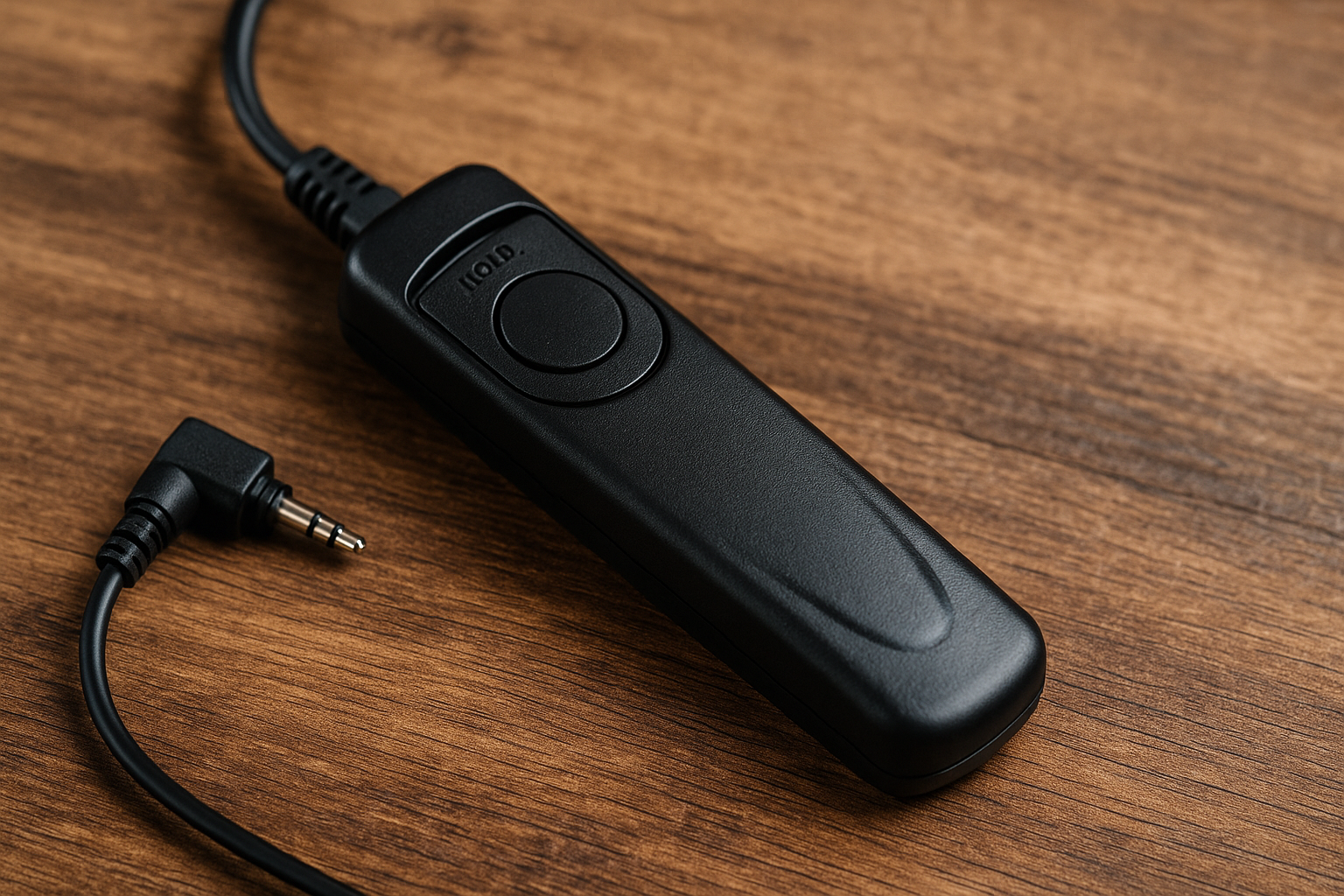
What it is: A cable or wireless device to trigger the camera shutter without physical contact with the camera body (useful for long exposures, HDR, landscapes).
Why it matters: Eliminates camera movement when you press the shutter. Critical for long exposures, astrophotography, or shooting in cold weather where you don’t want to touch the camera. Recognised by gear guides. Canon Central and North Africa+1
How to choose:
- Cable vs wireless: Wireless offers more flexibility.
- Compatibility: Ensure it works with your camera brand.
- Features: Timer delay, interval shooting, bulb mode if needed.
Tip: When shooting low-light or long exposure, engage mirror lock-up (if available) or use live view + remote trigger for maximum sharpness.
Battery Grip
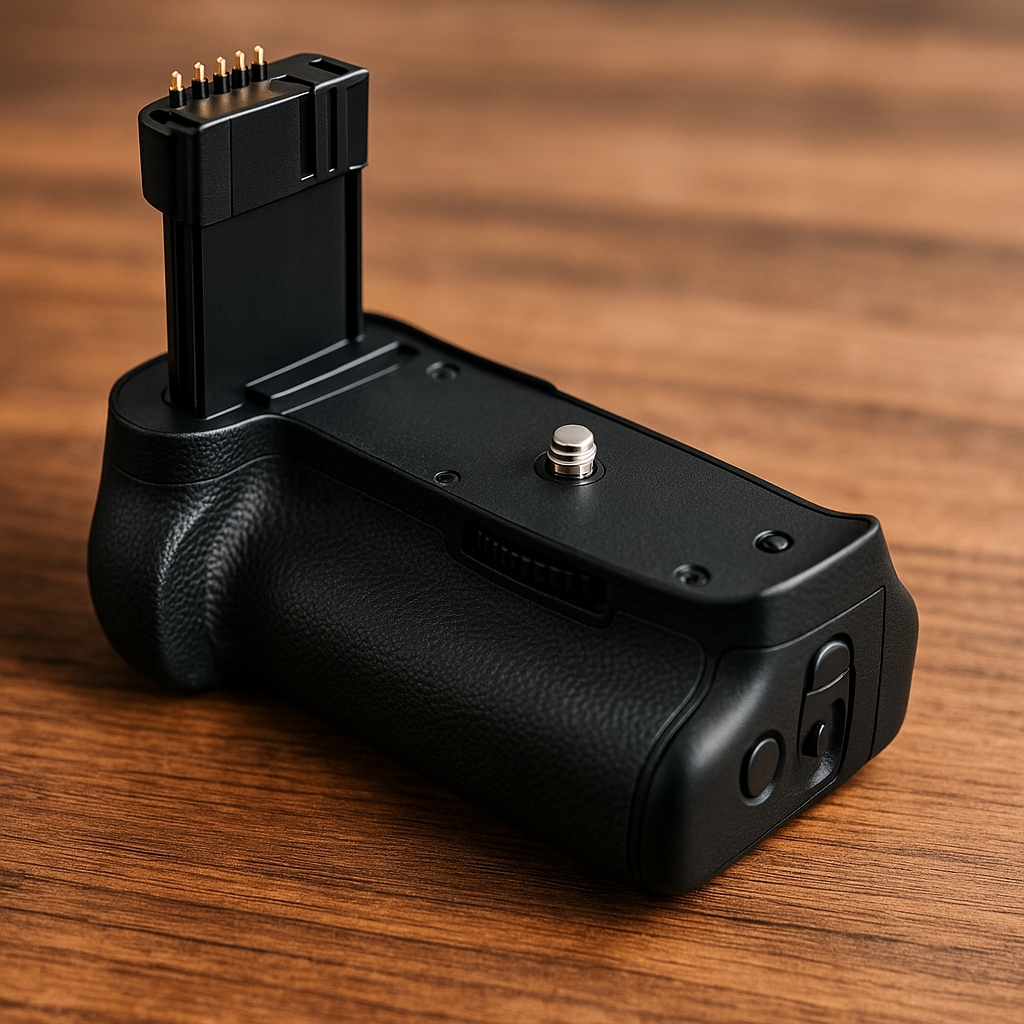
What it is: An accessory that attaches to your DSLR’s battery compartment, holds one or two additional batteries, and often adds vertical-orientation shutter controls. Wikipedia+1
Why it matters: Extends battery life significantly and improves ergonomics for vertical shooting (events, portraits).
How to choose:
- Model specific: Ensure compatibility with your camera model.
- Features: Vertical controls, extra shutter button, stability increase.
Tip: For wedding or event photography where you’re shooting many vertical frames, a battery grip almost pays for itself in convenience and speed.
Cleaning & Maintenance Kit
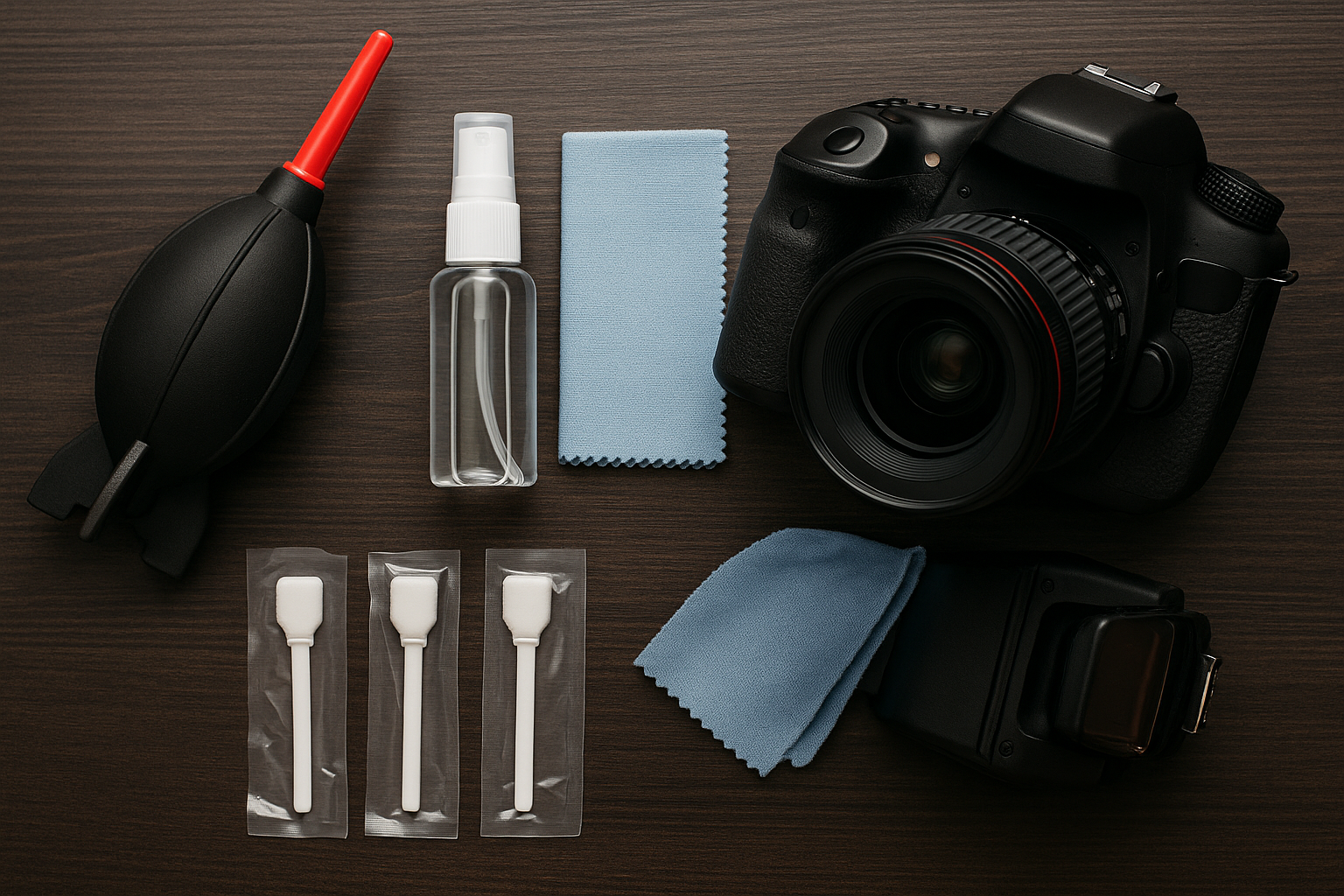
What it is: A basic kit for cleaning your DSLR sensor/lens and maintaining good gear hygiene—includes air-blower, brushes, lens cloths, cleaning fluid, sensor swabs.
Why it matters: Dust, smudges and grime degrade image quality and may lead to costly repairs. One review lists cleaning kit among “cheap but incredibly useful photography accessories”. Photography News
How to choose:
- Quality materials: lint-free cloths, proper sensor swabs.
- Brand reputation: Avoid ultra-cheap unbranded kits that could damage sensor.
Tip: Clean your gear regularly, especially when changing lenses outdoors. Back up your file system before cleaning sensors just in case you need to revert.
Protective Covers & Weather-Sealing Accessories

What it is: Rain covers, dust covers, lens hoods and similar accessories that protect your gear from the elements.
Why it matters: Outdoor shooting often means unexpected weather, dust, moisture. Keeping your gear safe means fewer issues and longer life. Shotkit
How to choose:
- Fit: Make sure the cover fits your setup (camera + lens size).
- Materials: Water-resistant, well-ventilated.
- Additional items: Lens hood helps prevent flare and adds protection.
Tip: Always keep a lightweight rain cover in your bag even if you’re shooting in “nice weather”—it may save you from an unexpected downpour.
Workflow & Back-Up Accessories (Laptop, Hard Drive, Card Reader)
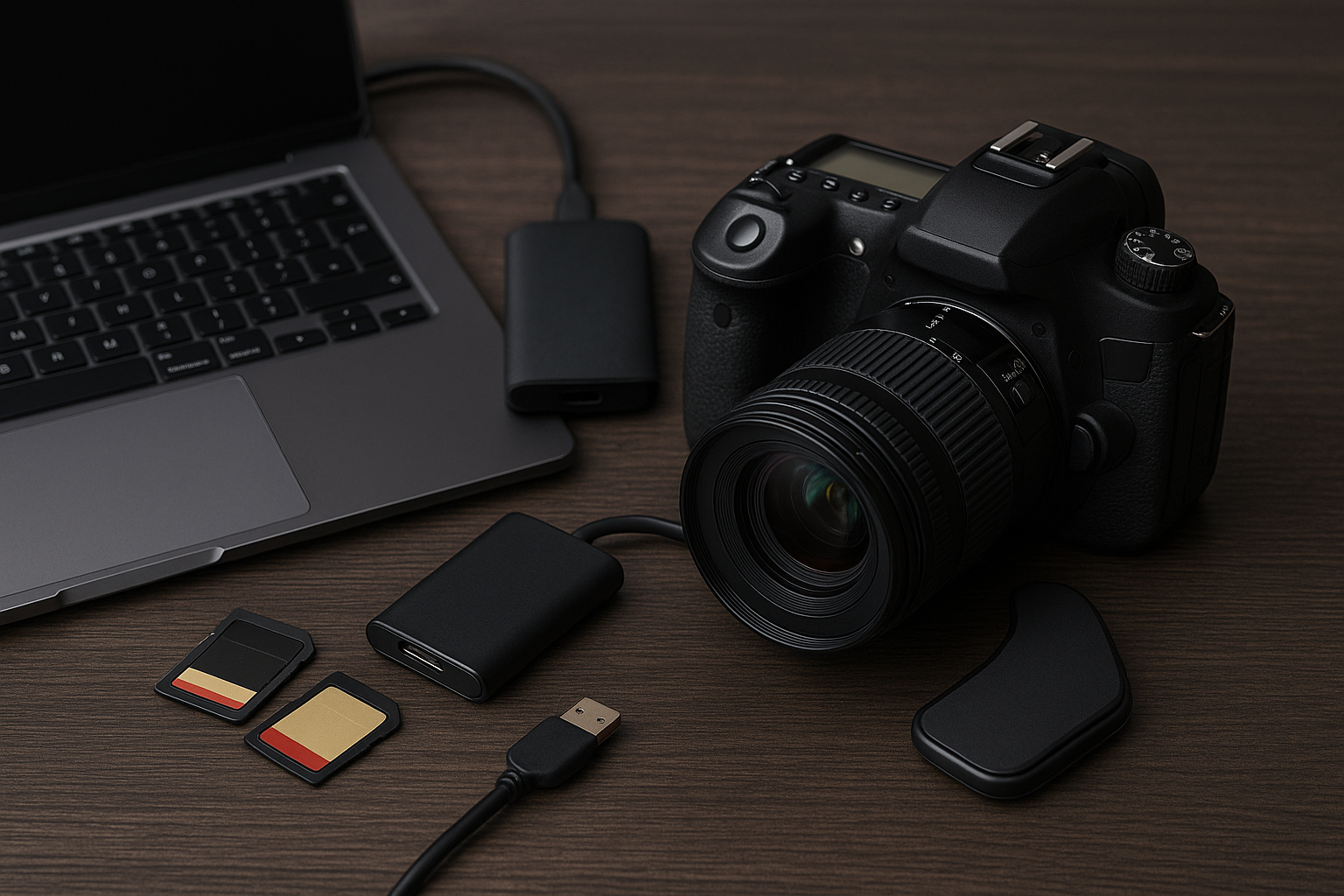
What it is: For professional or serious photographers, having a portable backup workflow can mean the difference between losing images and delivering on time.
Why it matters: Fast card reader, portable SSD, laptop ensure you can off-load, back up, and continue working—especially when travelling or on location. Guides highlight these as essential ‘gear for travel’ items. Photography Life
How to choose:
- SSD vs HDD: SSD is faster and more durable for travel.
- Card reader: UHS-II compatible for maximum speed.
- Laptop: Lightweight, reliable, with good battery life for backup work.
Tip: Adopt a 3-2-1 backup strategy while on assignment—three copies of files, on two media types, one off-site if possible.
Optional But Highly Valuable: Gimbal, Reflector, Rain Jacket, Head-Lamp
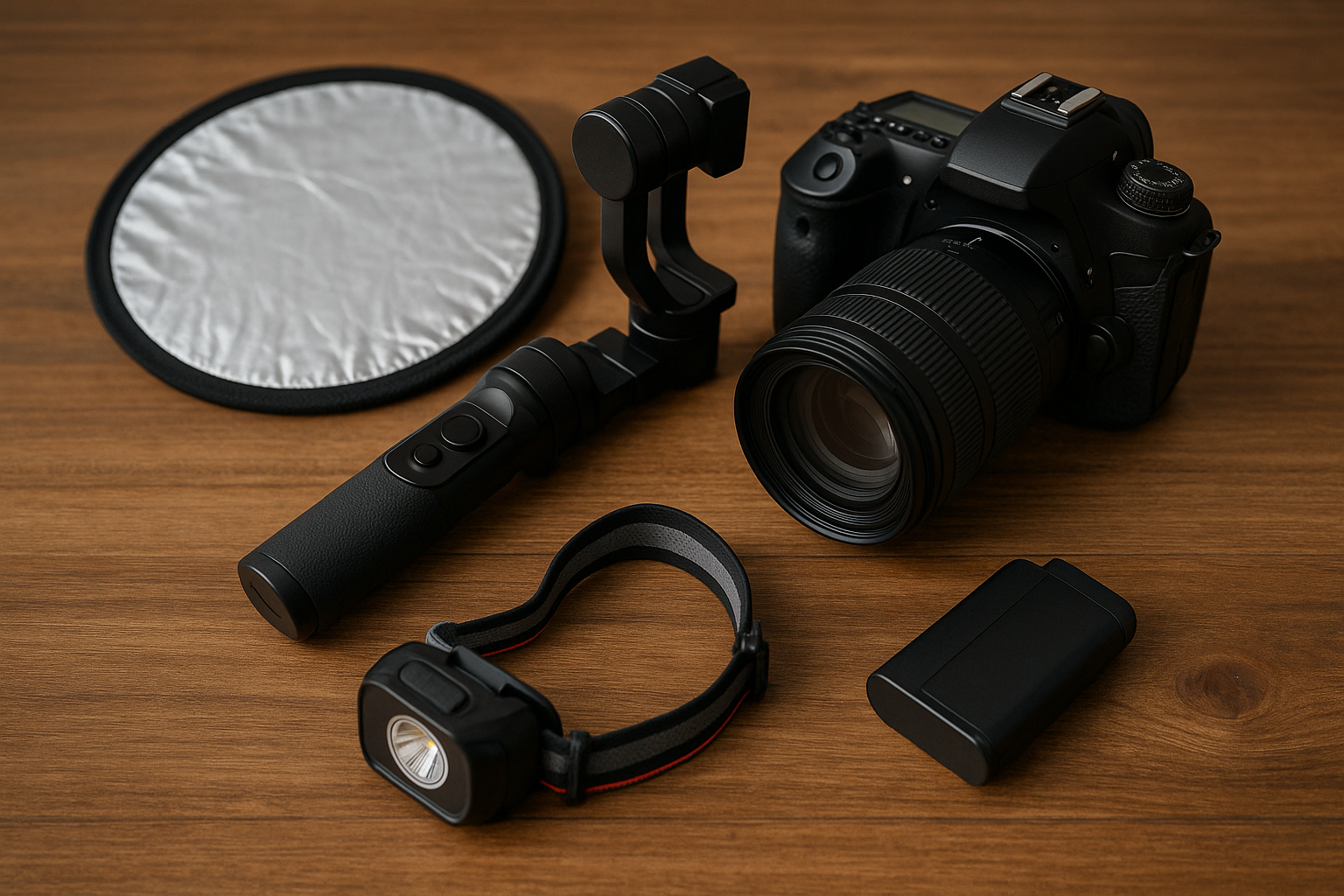
What it is: Accessories that aren’t strictly essential for all photographers but can open up specific creative possibilities. For example:
- Gimbal stabiliser for video work or moving shots.
- Reflector and diffuser for controlling light in portraits or outdoor shoots.
- Head-lamp with red light for night photography. Iceland Photo Tours+1
Why it matters: These tools enable specialised shooting styles that distinguish you from average photographers.
Tip: Evaluate whether your shooting style justifies these extras—they add cost and carry weight, but often pay off in creative impact.
Integrating Accessories into Your Workflow
Prioritise based on your style
- Are you mainly shooting landscapes? Then tripod, filters and remote shutter release go high.
- Are you doing events or weddings? Then battery grip, dual batteries, speedlight, good bag rise to the top.
- Are you travelling light? Opt for compact, multipurpose accessories (travel tripod, weather cover, high-capacity card).
Maintain consistency and readiness
A regular maintenance schedule and checklist will save you stress. For example:
- After each shoot: swap out batteries, format cards, charge gear.
- Monthly: clean sensor/lenses, inspect bag, check backup drives.
- Before major job: test remote triggers, backup workflow, check all accessories are packed.
Link to complementary resources
When refining your technique, you might consider diving into detailed “camera tips” to enhance your skill. Our article on “best camera accessories” explores more accessories beyond the essentials. If you’re just starting out, our primer on “photography gear essentials” gives a good overview for beginners.
By connecting these resources you build a coherent ecosystem of knowledge and gear readiness.
Frequently Asked Questions (FAQs)
Q1: What are the absolute must-have accessories when first buying a DSLR?
Answer: At a minimum you’ll want a quality bag, at least one high-speed memory card, a spare battery, and a lens filter (such as UV) for protection. From there, your choice depends on your shooting style—filters, tripod or flash may become essential next.
Q2: How many memory cards should I carry?
Two is a good baseline: one in the camera and one as a hot spare. For critical jobs, three gives you extra margin. Ensure each is high-speed (UHS-II/U3 or equivalent) and high-capacity (64 GB+).
Q3: Do I always need a tripod for DSLR shooting?
Not always. If you’re shooting handheld in good light with stable techniques then you might be fine. But for long exposure, night, studio, or highly polished work, a tripod is almost mandatory for sharp, professional results.
Q4: Will buying cheaper accessories save me money?
You can save some cost, but many cheaper accessories (cheap filters, generic batteries, low-load tripods) can become weak links—introducing image quality issues, gear damage, or workflow delays. It’s better to invest wisely in core accessories from reputable brands.
Q5: How should I protect my gear when travelling?
Use a padded bag designed for cameras, carry rain cover or weather-proofing, keep backups of memory cards and files, and ensure your power accessories (spare batteries, charger) are on hand. Use a checklist to minimise forgotten items.
Q6: Which accessory gives the highest “value per dollar” improvement?
A high-speed, reliable memory card often delivers the highest value—if your card is slow your burst rates and workflow suffer. After that, a solid camera bag or spare battery tends to offer strong ROI.
Q7: Can these accessories work for mirrorless cameras as well?
Yes—many accessories (bags, cards, tripods, filters) work across DSLR and mirrorless systems. However, ensure compatibility when it comes to brand-specific items like battery grips or remote triggers.
Q8: How often should I clean my camera sensor and lenses?
It depends on your shooting environment. If you shoot outdoors frequently or change lenses often, you might clean monthly or even more frequently. For studio or stable setups, every few months may suffice. Always use quality cleaning kits to minimise risk.
Q9: Does using a battery grip slow down my camera performance?
No—if it is a quality, compatible model designed for your camera. A battery grip should extend battery life and improve ergonomics without impacting performance.
Q10: How do I decide between accessories when budget is tight?
Start with your most critical shooting constraints. If you’re missing shots due to power or storage issues—prioritise battery/spare. If movement or blur is your issue—prioritise tripod. Build your kit based on your workflow pain points rather than buying accessories because “they’re nice”.
Useful Reads on Amateur Photographer Guide
To get more value from your new setup, explore our guides to improve your shooting technique and gear knowledge:
Need practical camera tips to use this gear effectively? Visit our tutorials section.
Want to explore more best camera accessories? Check our dedicated accessories hub.
New to photography? Our photography gear essentials guide is the perfect starting point.
Conclusion
Building a robust accessory kit for your DSLR is about more than buying gear—it’s about enabling better results, protecting your investment and streamlining your workflow.
From a padded camera bag to high-speed memory cards, filters to tripods, external flashes to power solutions—each accessory has a role in enhancing your photography. As you grow in skill and ambition, you can layer in specialised tools like gimbals, reflectors and weather-proof covers.
Remember:
- Choose based on your actual shooting style and pain-points.
- Invest in quality—cheap shortcuts often cost more in the long run.
- Maintain your gear and workflow regularly.
- Link equipment decisions back to your creative goals.
If you’re ready to step up your kit, start with one or two essential upgrades this month, integrate them into your workflow, and build from there. With the right accessories, you’ll be equipped to capture sharper, more consistent, higher-impact images—and clients and audiences will notice the difference.
Happy shooting! 📸

